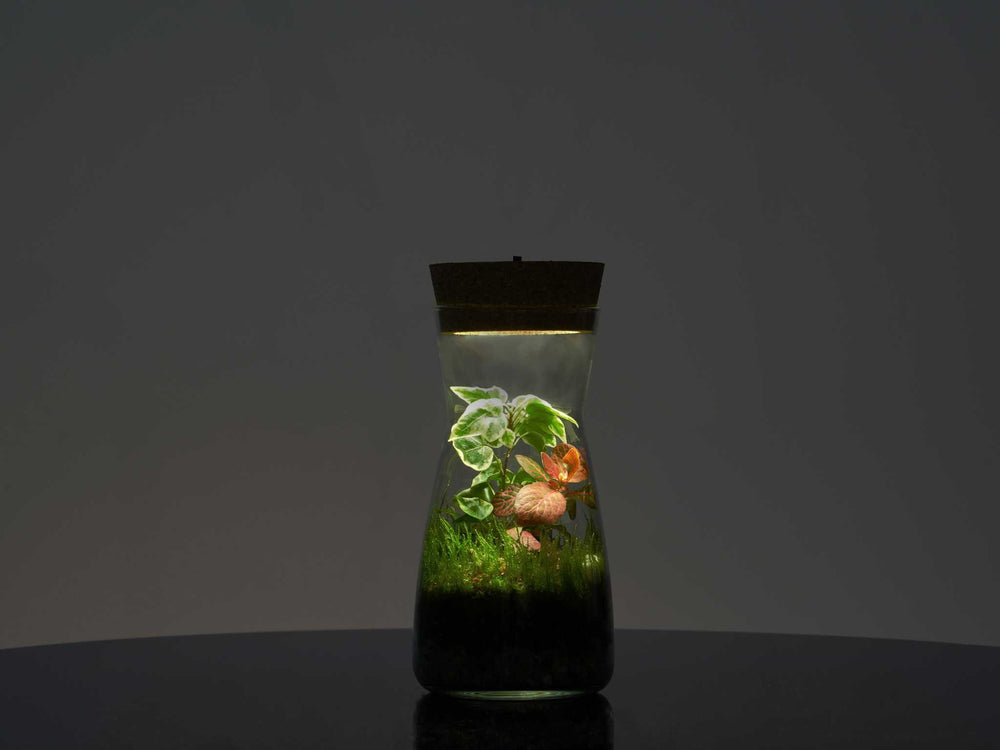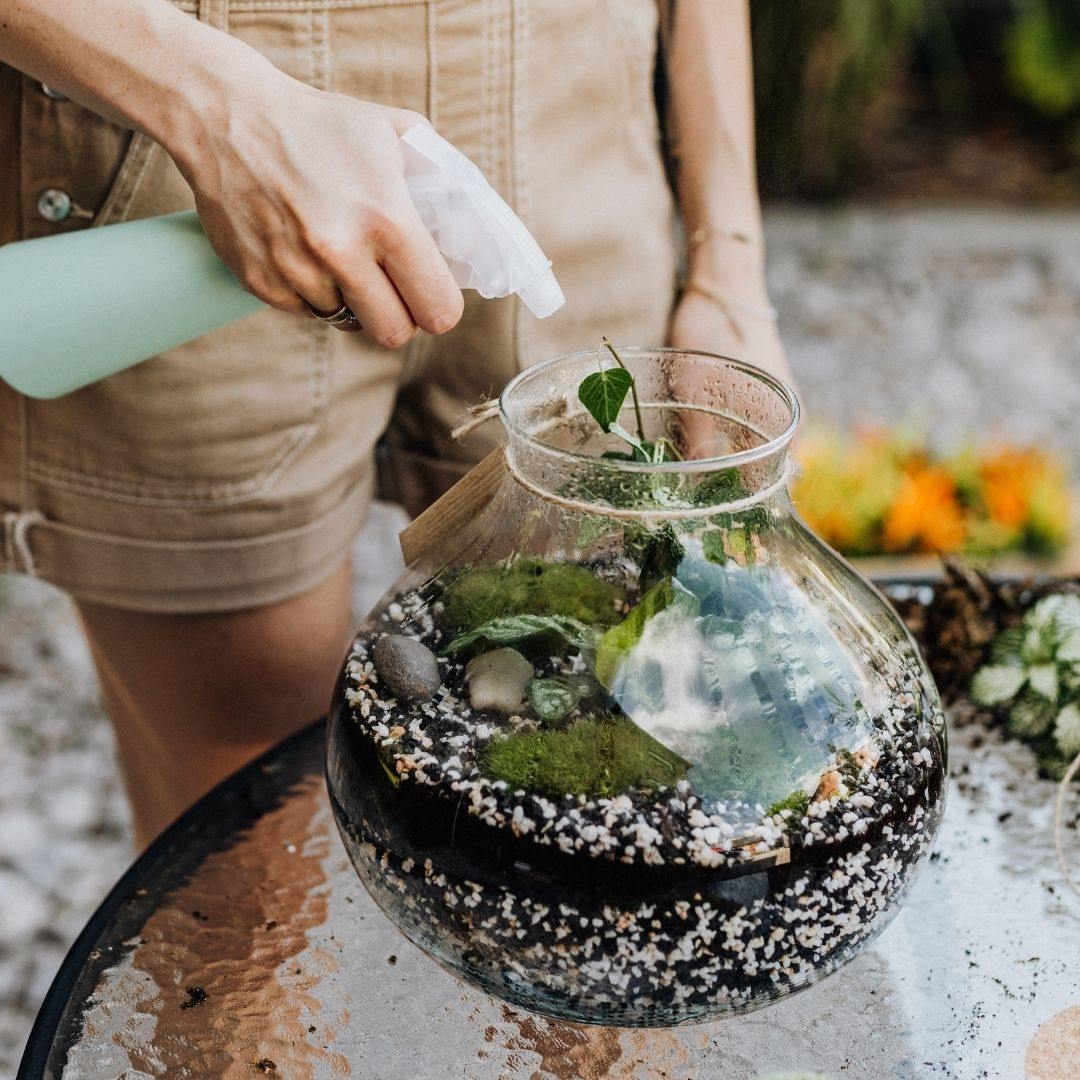How Long Do Terrariums Last?
Terrariums have surged in popularity as a way to bring a touch of nature indoors. These miniature ecosystems are not only beautiful but also functional, offering a low-maintenance alternative for those who lack the time or space for a traditional garden. But just how long do terrariums last? Let’s dive into the factors that influence the lifespan of a terrarium and provide some tips on how to ensure they thrive for years to come.

Understanding Terrariums
Before we get into the lifespan details, it's essential to understand what terrariums are. Essentially, a terrarium is a sealed or semi-sealed container housing plants, and sometimes small animals. There are two primary types: open and closed.
Open Terrariums
Open terrariums are exposed to the air and typically contain plants that thrive in drier conditions, like succulents and cacti. These terrariums require more frequent watering but benefit from better air circulation.
Closed Terrariums
Closed terrariums, on the other hand, are sealed environments that create their own microclimate. They are perfect for humidity-loving plants like ferns, mosses, and other tropical plants. The moisture inside a closed terrarium recycles itself through condensation and evaporation, making them relatively low-maintenance.
Factors Influencing Terrarium Longevity
The lifespan of a terrarium can vary widely based on several factors:
Type of Plants
The plants you choose play a significant role in your terrarium's longevity. Some plants live longer than others. For instance, succulents can live for several years with proper care, while some tropical plants may only last a few months if not maintained correctly.
For example, a succulent terrarium featuring Echeveria and Haworthia can thrive for up to five years with minimal watering and a good sunlight. In contrast, a tropical terrarium with Fittonia and Peperomia might require more attention to humidity levels but can still last for several years if well-maintained.

Container Quality
The quality of the container also affects longevity. Clear glass containers are generally preferred as they allow light to enter while retaining moisture. However, plastic containers can also be used but may degrade over time due to sunlight exposure. Additionally, they tend to look less attractive than glass containers.
Example: A high-quality glass jar with a cork lid can provide a long-lasting environment for your plants, whereas a plastic container may need replacement within a couple of years due to wear and tear.
Light Conditions
Light is crucial for plant growth, and inadequate lighting can shorten your terrarium's lifespan. Most plants require indirect sunlight or artificial grow lights to thrive. Too much direct sunlight can cause overheating and damage the plants.
Placing your terrarium near an east-facing window ensures it gets morning sun, which is less intense and more beneficial for most plants. Using grow lights can also help, especially in rooms with limited natural light.
Watering Practices
Proper watering is essential for maintaining a healthy terrarium ecosystem. Overwatering or underwatering can stress plants and lead to their eventual death. Closed terrariums generally require less frequent watering compared to open ones due to their self-sustaining nature.
Watering an open succulent terrarium once every two weeks is usually sufficient. For a closed terrarium, you might only need to add water every few months, depending on the humidity inside.

Maintenance
Regular maintenance is key to extending the life of your terrarium. This includes pruning dead leaves and removing mould or pests. If one of the plants doesn’t make it, don’t get disheartened—this can happen. Simply remove it, give it a few weeks, and feel free to plant a new one as a replacement.
Tip: Checking your terrarium every week for signs of mould or pests can prevent small problems from becoming significant issues. Regular pruning helps maintain a healthy and aesthetically pleasing appearance.
How Long Can You Expect Your Terrarium to Last?
Under optimal conditions, an open terrarium with succulents or cacti can last anywhere from six months to several years. Longevity largely depends on maintenance and addressing issues promptly.
Closed terrariums tend to have longer lifespans due to their self-sustaining ecosystems. With proper care, they can last from several months to several years.
Can a Terrarium Last Forever? (+ The Oldest Terrarium)
In theory, a perfectly balanced enclosed terrarium should thrive indefinitely. The longest-living sealed terrarium, created by David Latimer, has lasted on its own for over 64 years! David Latimer’s 64-year-old terrarium is a testament to how a well-maintained terrarium can become a lifelong companion. He planted a single Spiderwort sprout in a 10-gallon glass bottle, watered it once, sealed it, and then only watered it again after 12 years. Despite minimal intervention, the terrarium has flourished.

Our Oldest Thriving Terrarium
We created our oldest thriving terrarium in 2020. We watered it upon creation and again after one year. Now, we simply observe it as it grows like a jungle. We haven't trimmed the plants at all, allowing them to form a wild, natural landscape. This terrarium serves as a daily reminder of nature's resilience and beauty with minimal human intervention.

Tips for Maximising the Lifespan of Your Terrarium
To ensure your terrarium lasts as long as possible, consider these tips:
Choose the Right Plants
Select plants suited for your type of terrarium (open or closed). Research their specific needs regarding light, water, and temperature.
Use Quality Materials
Invest in a high-quality container made from glass. Ensure you put an adequate drainage layer at the bottom to prevent waterlogging.
Monitor Light Levels
Place your terrarium in an area with appropriate lighting conditions, bright, indirect sunlight works best for most plants. If natural light is insufficient, consider using artificial grow lights.
Water Wisely
Follow recommended watering guidelines based on your plant selection. Remember, closed terrariums require less frequent watering compared to open ones.
Regular Maintenance
Perform routine checks on your terrarium’s health by removing dead leaves and checking for pests or moulds. Periodic trimming keeps plants bushier and discourages leggy growth. Cleaning the glass allows more light in and enhances the view of your miniature garden.
Why Do Terrariums Last So Long?
When you place plants inside a glass vessel and seal it, you create a mini-ecosystem complete with its own water cycle. Light triggers transpiration, where water vapour released by plant leaves condenses on the glass and eventually trickles back into the soil. This keeps the environment humid and moist, reducing the need for frequent watering. However, the glass needs to be closed with a glass or cork lid to maintain this cycle. It doesn’t need to remain sealed all the time. Feel free to open it to perform checks and maintenance of your terrarium.

Some Plants Are Not Like the Others
Plants like mosses, liverworts, and many epiphytes (including some ferns) operate slightly differently. These plants often absorb moisture from the air rather than the soil and may require more frequent watering to maintain high humidity levels. Moss terrariums or those depicting miniature landscapes may need more maintenance to keep them looking their best.
Enjoy Your Terrarium for Years to Come
In conclusion, terrariums can last many years - potentially even outliving you - thanks to their self-sustaining ecosystems. But to enjoy them at their best, monitor their condition, step in with a trim or a splash of water when needed, and relish the beauty of your miniature indoor garden.
By following these guidelines and tips, you can ensure your terrarium remains a thriving, beautiful piece of nature inside your home for years to come. Whether you’re a seasoned gardener or a beginner, the magic of a well-maintained terrarium is a joy to behold.
Interesting Facts on Terrariums
Did you know that terrariums were first popularized in the Victorian era?
Dr. Nathaniel Bagshaw Ward accidentally discovered that plants could thrive in closed glass containers, leading to the creation of the first 'Wardian case' - a precursor to the modern terrarium.

Terrariums not only provide a beautiful aesthetic to your home but also have a calming effect.
The presence of greenery has been shown to reduce stress levels and promote a sense of well-being, making them a perfect addition to any indoor space.
The microclimate inside a closed terrarium mimics natural ecosystems.
Through a process called transpiration, plants release water vapor, which then condenses on the glass walls and drips back into the soil. This creates a continuous water cycle, reducing the need for frequent watering.
During the Victorian era, terrariums were used to transport exotic plants across long distances.
The sealed environment of the Wardian case protected the plants from saltwater spray and fluctuating temperatures, allowing them to survive long sea voyages.
For those who struggle to keep houseplants alive, terrariums are a fantastic solution.
The controlled environment within a terrarium reduces the risk of pests and diseases, and the self-sustaining nature of closed terrariums means less maintenance.













Leave a comment